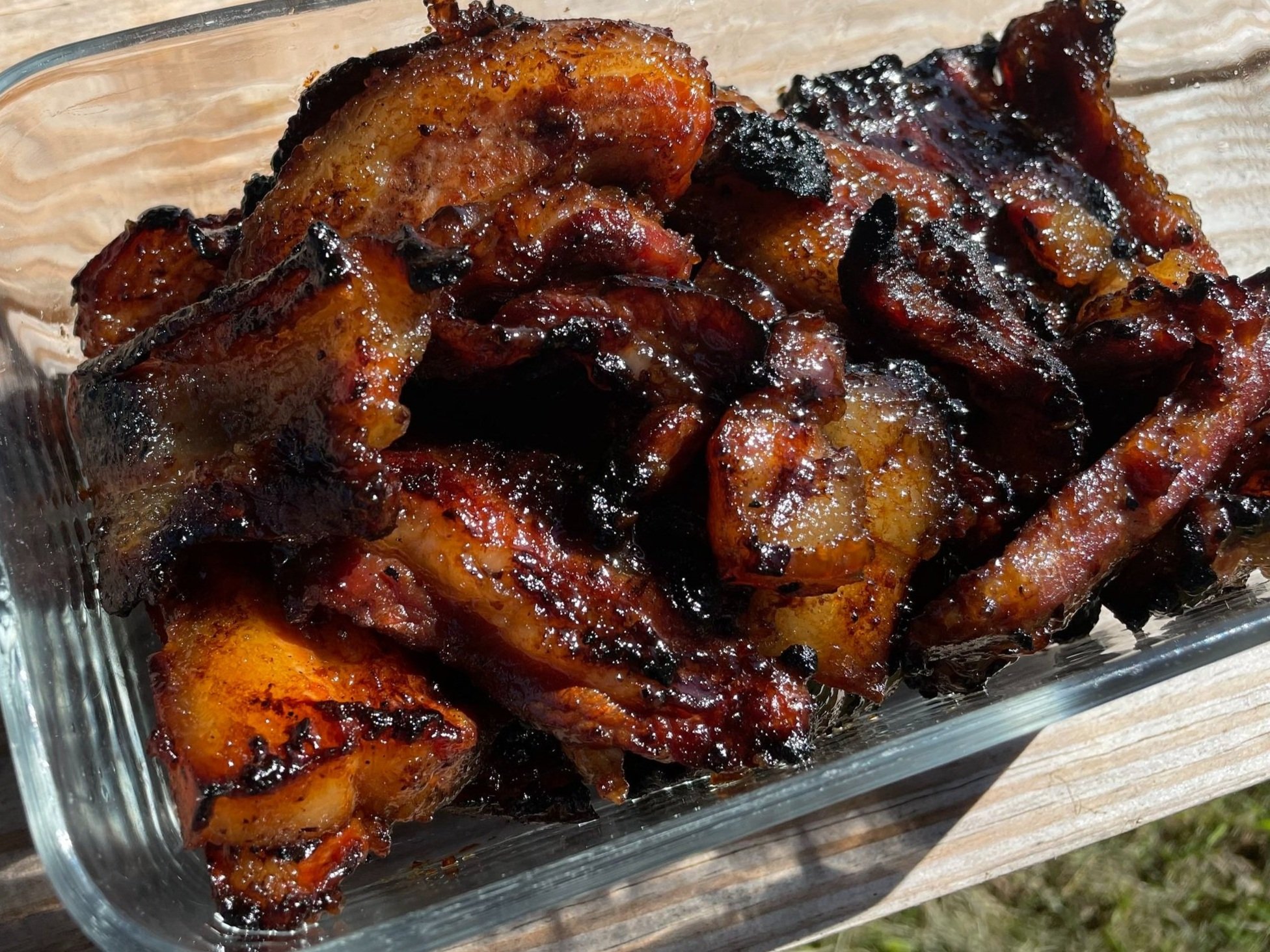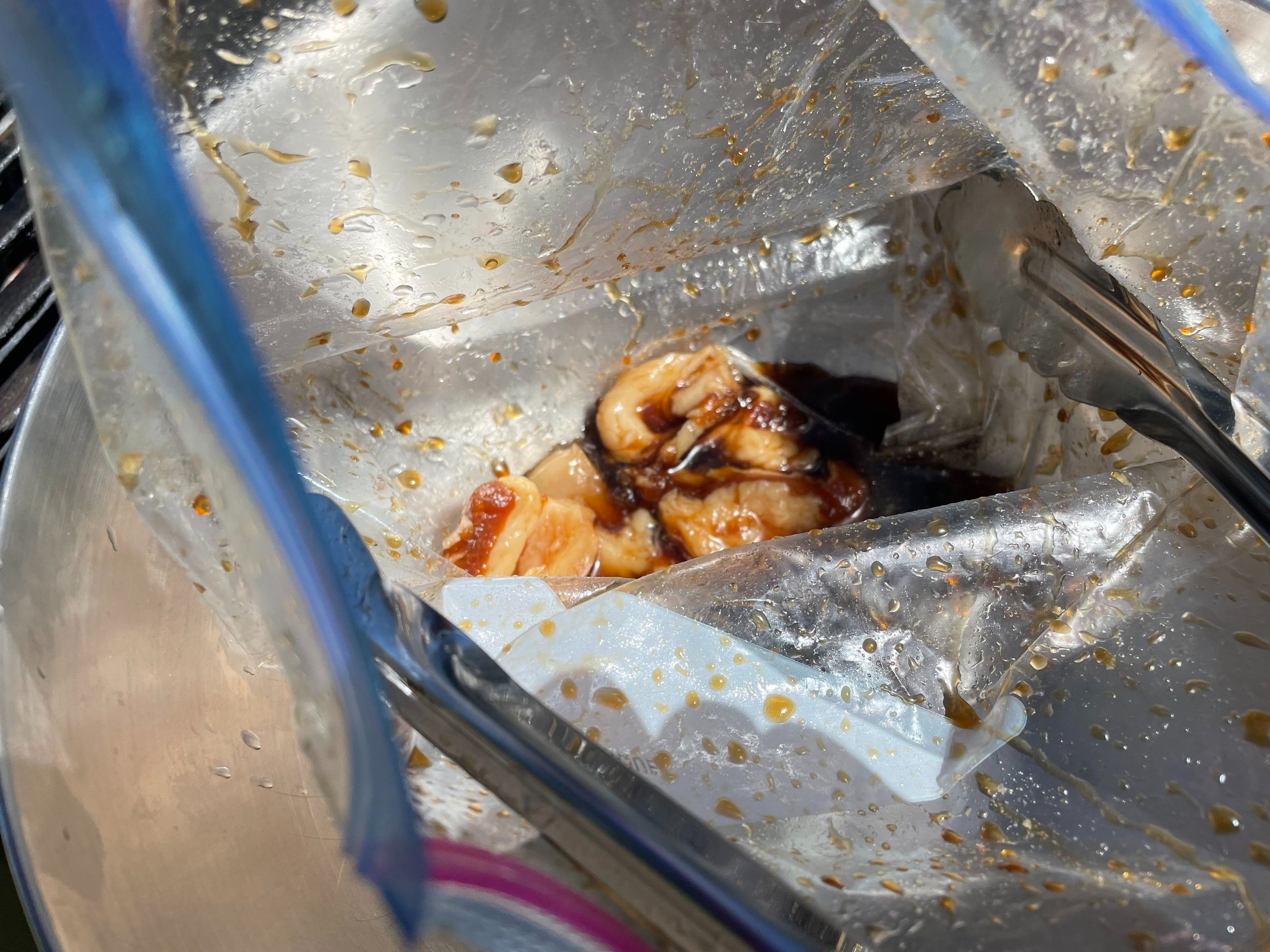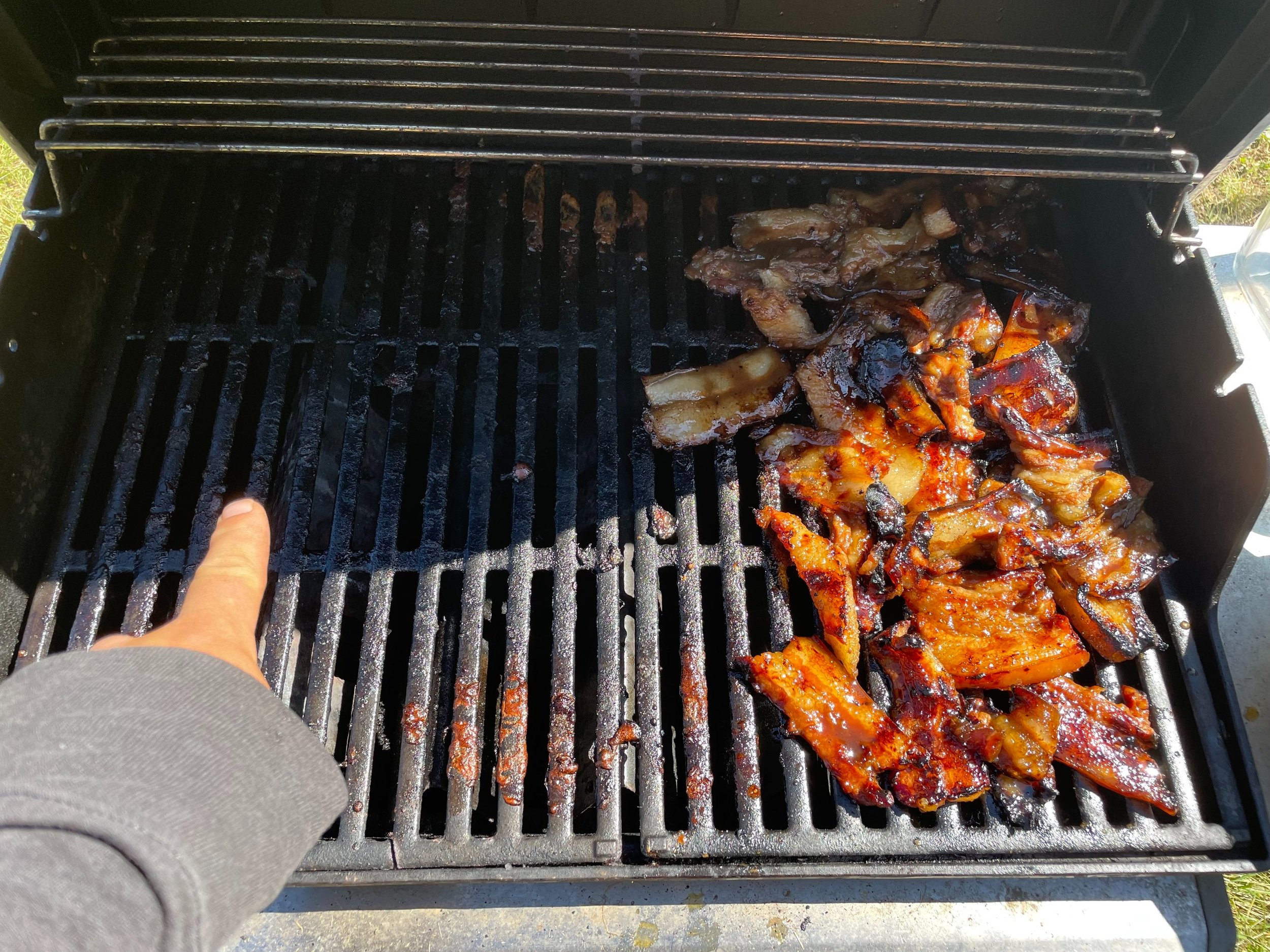Grilled Sweet-Glazed Pork Belly
/Source: Anchor Ranch Farm
Pork belly is an under-appreciated cut of meat in the United States because of the increased popularity of bacon since the social buzz campaigns of the Noughties. I blame Muscles Glasses.
I mean, bacon is wonderful, but so is the uncured pork belly. Also, you can make bacon out of a lot more than just pork belly. Shoulder bacon is, I think, for example, a better choice for bacon, lettuce, and tomato sandwiches.
Pork belly is more popular in Asian cuisine and we have featured several ideas from Asian-style cooking for how to prepare pork belly, including Red-Braised Pork Belly (Dong Po Rou) and Chashu Pork Belly. However, those are relatively complex recipes which require a lot of time in the oven. This is a faster (somewhat) version that uses a grill.
Materials
1 pork belly roast, skin off (skin on roasts are better used for some other method)
Soy sauce and honey or sugar-syrup
A grill. A propane grill would be easiest but charcoal is possible
Grill tongs
A fire extinguisher
Method
Slice the pork belly into strips a half inch or less in thickness and about 3 inches long.
Mix a marinade of soy sauce and honey or sugar syrup. Proportions are up to you but don’t skimp on the sweetness, go light on the salty, and use enough liquid to cover the belly strips. Add other ingredients for additional flavor: garlic, red pepper flakes, onion, orange juice (if you need more liquid), brown sugar, perhaps other spices — whatever you like.
Pork belly strips in marinade. Source: Anchor Ranch Farm
Marinate the pork belly slices in the marinade for at least an hour. A good way to cover the meat without wasting a pile marinade ingredients is to put everything into a resealable plastic bag. Close the bag up almost all the way and submerge it in a pot of cold water until just the very top of the bag is exposed (so the water doesn’t go inside). The water will push the air out of the bag, creating good contact between meat and marinade without having to drown it. Close the now mostly vacuum-sealed bag and let the marinade do its work.
When ready to cook, take the meat out of the marinade and drain it but save the marinade. Start a two-zone fire in your grill and lay the strips of pork belly over the hot zone, working quickly. This is where a propane grill is nice, because the fatty pork belly will cause flare ups and it’s very nice to be able to turn off the flame. If using a charcoal grill, make sure the coals are all the way over on one side, don’t use a lot of coals, and make sure there is plenty of open grill top away from the flame. Close the lid of your grill.
Pork belly on the grill “hot zone” (easier on a gas grill where you can turn on and off burners as needed, but possible with charcoal also.) Source: Anchor Ranch Farm
Keep the lid closed to minimize flare ups. If when you start a grease fire, move all the pork belly off the flame, turn off the gas if possible, close the lid and wait for the fire to go out. If you only have a charcoal grill and you don’t feel completely comfortable handling a grease fire in your grill safely, take your pork belly to a friend’s house who has a gas grill so you can turn the heat off.
Once the pork belly gets some color on the first side (flare ups help with this), flip it once to the other side. This entire step will only take a few minutes.
Pork belly moved off direct heat to the grill’s “cold zone”. Only the burner pointed to in the photo is on. Note long sleeves of natural cotton fiber to protect from sizzling pops of pork fat.
Once you have some good color on the pork belly strips and and enough char to feel like you’re grilling, move all your pork belly strips to the cold zone of the grill. They don’t need to be spread out, you can put them in a clump or a pile away from the flame. Take your reserved marinade and brush or drizzle it over the strips. Then close the lid and let them cook with indirect heat. For better results let the pork belly strips cook in indirect heat long enough until they get soft. We left them for only about 10 minutes and that was not long enough; some pieces were chewy. Try waiting 30 minutes or more. You’re not going to dry out the fatty pork belly, just be careful to keep it away from the direct flame so as not to burn it.
Vinegar-based quick pickled (1 hour or so) vegetables are a great enhancement to fatty meats, especially in hot weather. Save the vinegar brine for future picklings!
When your pork belly strips are the desired texture and softness, take them off the grill. We made sliders with brioche buns and a quick cucumber pickle (julienned cucumber, vinegar, salt, sugar, coriander seeds, one hour) but this would be great in a rice bowl as well.






